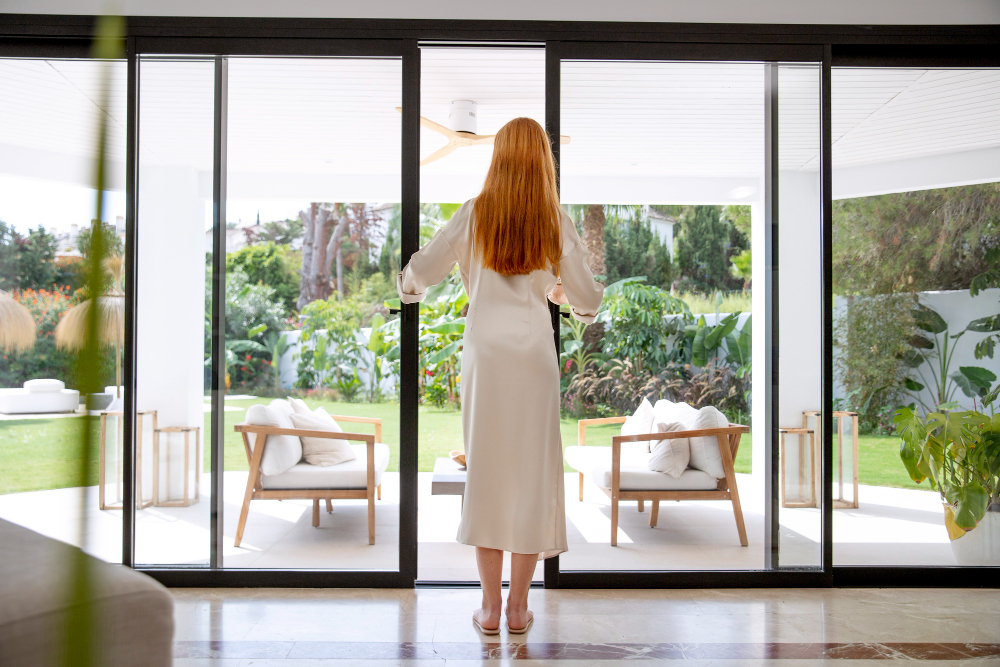Interior doors play a vital role in any architectural space, serving as gateways between rooms while also contributing significantly to the overall aesthetics and functionality of a living or working environment. Over the years, interior door design has evolved from traditional and utilitarian structures to modern masterpieces that embrace both form and function. In this article, we will delve into the fascinating world of modern interior doors, exploring their characteristics, materials, design trends, and the impact they have on contemporary interior spaces.
Characteristics of Modern Interior Doors
- Sleek and Minimalistic Design: One of the defining features of modern interior doors is their sleek and minimalistic design. Clean lines, simple profiles, and uncluttered surfaces create a sense of elegance and sophistication. These doors often blend seamlessly with contemporary interior styles, promoting a sense of spaciousness and light.
- Use of Innovative Materials: Modern interior doors often incorporate innovative materials that were not commonly used in traditional designs. Glass, metal, fiberglass, and composites have gained popularity due to their versatility, durability, and ability to add unique visual elements to the door’s appearance.
- Emphasis on Natural Light: Modern interior doors frequently incorporate glass elements or have large glass panels, allowing natural light to filter through rooms. This fosters a bright and airy ambiance, connecting spaces and promoting an open-plan living concept.
- Space-saving Solutions: As urban living spaces become more compact, modern interior doors often feature space-saving solutions like sliding doors, barn doors, or pocket doors. These innovative designs optimize floor space while maintaining the functionality of traditional doors.
- Customization and Personalization: Modern interior doors offer extensive customization options, allowing homeowners and designers to tailor the doors to fit the overall interior design theme. From finishes to hardware and door sizes, customization ensures a perfect match for any interior space.
Materials Used in Modern Interior Doors
- Wood: While wood remains a classic choice for interior doors, modern designs may feature engineered wood products that offer enhanced durability and stability. Veneers with striking patterns and textures are popular choices, providing a touch of natural warmth to modern spaces.
- Glass: Glass doors are a hallmark of modern interior design, contributing to a sense of transparency and connectivity between rooms. Frosted or tinted glass provides privacy without compromising the influx of natural light.
- Metal: Doors with metal components, such as aluminum or steel, offer an industrial and contemporary look. These doors are ideal for urban and loft-style interiors.
- Fiberglass: Fiberglass doors are gaining popularity due to their versatility, resistance to warping, and ability to mimic the appearance of wood or other materials.
Design Trends in Modern Interior Doors
- Slender Profiles: Modern interior doors often have thin profiles, allowing them to blend effortlessly into the overall interior design. Thin frames and narrow stiles create a sleek and unobtrusive look.
- Geometric Patterns: Contemporary interior doors may incorporate geometric patterns, adding visual interest and a touch of artistic flair to the design.
- Integrated Hardware: Modern interior doors often feature concealed or integrated hardware, such as hidden hinges and flush pulls, emphasizing the clean lines and minimalist aesthetics.
- Monochromatic Finishes: Neutral colors and monochromatic finishes are a popular choice for modern interior doors. White, black, gray, and natural wood tones are frequently used to complement various interior styles.
Impact on Contemporary Interior Spaces
The evolution of modern interior doors has significantly impacted contemporary interior spaces in various ways:
- Increased Aesthetics: Modern interior doors elevate the overall aesthetic appeal of interior spaces, making them more visually appealing and engaging.
- Enhanced Functionality: Innovative designs and space-saving solutions optimize the functionality of interior doors, particularly in compact living spaces.
- Improved Connectivity: With glass elements and open-plan designs, modern interior doors enhance the connectivity between different areas of the house, promoting a sense of unity and openness.
- Natural Light and Energy Efficiency: The emphasis on glass elements allows for better natural light distribution, reducing the need for artificial lighting during the day and improving energy efficiency.
Conclusion
Modern interior doors are not merely functional elements but design features that can transform interior spaces, adding sophistication, functionality, and aesthetics. Their innovative materials, sleek designs, and customization options enable them to complement a wide range of interior styles. As architects, designers, and homeowners continue to explore new possibilities, the evolution of modern interior doors is sure to bring even more exciting and inspiring changes to our living and working spaces.


